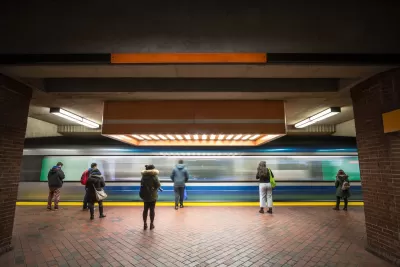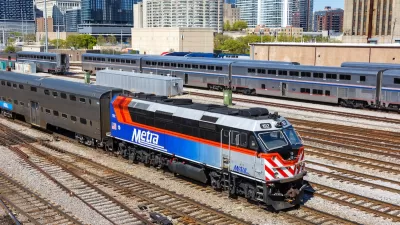Public transit providers still face budget gaps, staffing shortages, and challenges acquiring clean-energy vehicles.

In a survey of leaders at public transit agencies, close to half of respondents said their agencies are working to expand service, despite the drops in ridership experienced during the pandemic.
As Dan Zukowski explains in Smart Cities Dive, “Transit agencies separately have said they are adding more service throughout the day, as well as at night and on weekends, to adapt to new travel and commuting patterns.”
Many agencies are still experiencing budget shortfalls, particularly those that don’t have a dedicated source of funding outside of farebox revenue. “Other headaches the survey addresses include workforce recruitment and retention, safety and the transition to low- or zero-emission vehicles. Over half of survey respondents said they have recruitment and training initiatives in place, and a quarter cite retention as a priority of current initiatives.”
Transit agencies are also working to shift to cleaner fuels, and electric bus manufacturers are struggling to keep up with demand. “The survey reveals that 61% of respondents are having trouble buying new vehicles and 57% are challenged with needed upgrades to their bus facilities, such as charging infrastructure.”
FULL STORY: What US transit agencies worry most about right now

Planetizen Federal Action Tracker
A weekly monitor of how Trump’s orders and actions are impacting planners and planning in America.

Congressman Proposes Bill to Rename DC Metro “Trump Train”
The Make Autorail Great Again Act would withhold federal funding to the system until the Washington Metropolitan Area Transit Authority (WMATA), rebrands as the Washington Metropolitan Authority for Greater Access (WMAGA).

The Simple Legislative Tool Transforming Vacant Downtowns
In California, Michigan and Georgia, an easy win is bringing dollars — and delight — back to city centers.

The Small South Asian Republic Going all in on EVs
Thanks to one simple policy change less than five years ago, 65% of new cars in this Himalayan country are now electric.

DC Backpedals on Bike Lane Protection, Swaps Barriers for Paint
Citing aesthetic concerns, the city is removing the concrete barriers and flexposts that once separated Arizona Avenue cyclists from motor vehicles.

In These Cities, Most New Housing is Under 441 Square Feet
With loosened restrictions on “micro-housing,” tiny units now make up as much as 66% of newly constructed housing.
Urban Design for Planners 1: Software Tools
This six-course series explores essential urban design concepts using open source software and equips planners with the tools they need to participate fully in the urban design process.
Planning for Universal Design
Learn the tools for implementing Universal Design in planning regulations.
Smith Gee Studio
City of Charlotte
City of Camden Redevelopment Agency
City of Astoria
Transportation Research & Education Center (TREC) at Portland State University
US High Speed Rail Association
City of Camden Redevelopment Agency
Municipality of Princeton (NJ)





























